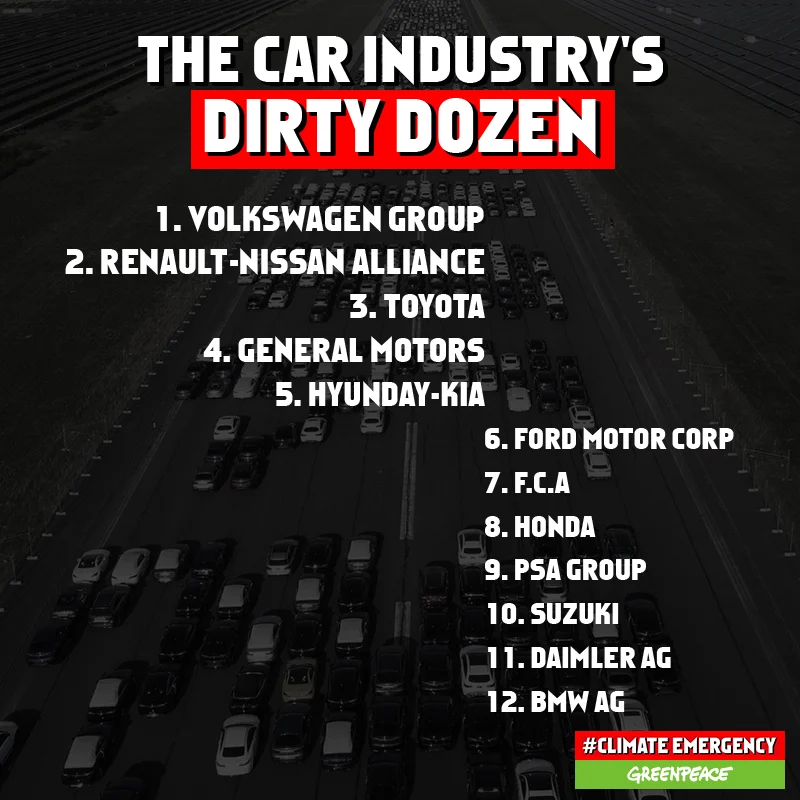Driving Towards a Cleaner Future: A Look at Car Emissions Standards and the Road Ahead 3
Car emissions standards are a critical issue for the automotive industry, as they play a vital role in reducing air pollution and improving public health. In this blog, we’ll take a closer look at the current state of car emissions standards around the world, with a focus on Europe, the USA, and Asia. We’ll examine the history of these regulations, the current state of affairs, and what the future might hold for car emissions standards.
EUROPE:
A. History of Emissions Standards in Europe Europe has a long and complex history when it comes to car emissions standards. It all started back in the 1970s, when the European Union (EU) first began to take notice of the harmful effects of car emissions on public health and the environment. At the time, there were no regulations in place to limit the amount of pollution that cars could emit.
In response to growing concerns, the EU introduced the first set of emissions standards in 1992, known as Euro 1. These regulations focused on reducing emissions of carbon monoxide, hydrocarbons, and nitrogen oxides. Over the years, the EU has continued to revise and strengthen these regulations, with the latest version being Euro 6d.
B. Current Regulations in Europe Today, the EU has some of the strictest emissions standards in the world. Euro 6d, which was introduced in 2019, sets limits on the amount of harmful pollutants that new cars can emit, including nitrogen oxides, particulate matter, and carbon monoxide. The standards apply to all new passenger cars and light commercial vehicles sold in the EU.
12 companies with most CO2 emissions

In addition to emissions standards, the EU has also set targets for reducing CO2 emissions from cars. These targets aim to reduce the average emissions of new cars to 95 grams of CO2 per kilometer by 2021, and to 60 grams by 2030. This is part of the EU’s broader efforts to combat climate change and reduce greenhouse gas emissions.
The EU’s emissions standards have had a significant impact on the automotive industry. In order to comply with the regulations, car manufacturers have had to invest in new technologies, such as hybrid and electric powertrains, and improve the efficiency of their vehicles. This has led to a wave of innovation in the industry, with new technologies and features being developed to help reduce emissions and improve fuel efficiency.
Euro 1, Euro 2, Euro 3, Euro 4, Euro 5, and Euro 6 are a series of emissions standards set by the European Union (EU) to regulate the amount of harmful pollutants that new vehicles can emit.
Euro 1 was introduced in 1992 and focused on reducing emissions of carbon monoxide (CO), hydrocarbons (HC), and nitrogen oxides (NOx).
Euro 2, which was introduced in 1996, introduced stricter limits on emissions of CO and HC, as well as limits on particulate matter (PM) emissions.
Euro 3, which was introduced in 2000, further reduced limits on CO, HC, and NOx emissions, and introduced limits on PM emissions for diesel vehicles.
Euro 4, which was introduced in 2005, lowered the limits on CO, HC, and NOx emissions even further, and introduced tighter limits on PM emissions for both petrol and diesel vehicles.
Euro 5, which was introduced in 2009, set even stricter limits on CO, HC, NOx, and PM emissions for both petrol and diesel vehicles, and introduced limits on emissions of certain air pollutants, such as nitrogen dioxide (NO2).
Euro 6, which was introduced in 2014 and updated in 2019 as Euro 6d, is the current standard and sets the strictest limits on emissions of CO, HC, NOx, PM, and other air pollutants for both petrol and diesel vehicles. It also includes real-world driving emissions (RDE) testing to ensure that vehicles meet the emissions limits under real-world driving conditions.
EU’s emisions standards have played a crucial role in reducing air pollution and improving public health. While there are still challenges to overcome, such as ensuring that older cars are retrofitted to meet the latest standards, the EU is leading the way when it comes to regulating car emissions. As we look to the future, it will be fascinating to see how the EU’s emissions standards continue to evolve and shape the automotive industry.
USA:
A. History of Emissions Standards in the USA The United States has a long and complex history when it comes to car emissions standards. In the 1960s and 1970s, growing concerns about air pollution and its impact on public health and the environment led to the introduction of the Clean Air Act. This landmark legislation set the stage for the introduction of the first emissions standards in the USA, which focused on reducing the amount of harmful pollutants that cars could emit.
Over the years, the USA has continued to revise and strengthen its emissions standards, with the latest version being Tier 3.
B. Current Regulations in the USA Today, the USA has a set of emissions standards known as Tier 3, which were introduced in 2014. These regulations set limits on the amount of pollutants that new cars can emit, including nitrogen oxides, particulate matter, and volatile organic compounds.
In addition to emissions standards, the USA has also set targets for reducing greenhouse gas emissions from cars. These targets aim to reduce the average emissions of new cars to 105 grams of CO2 per mile by 2025.
The USA’s emissions standards have had a significant impact on the automotive industry. Car manufacturers have had to invest in new technologies, such as hybrid and electric powertrains, to comply with the regulations. This has led to a wave of innovation in the industry, with new technologies and features being developed to help reduce emissions and improve fuel efficiency.
However, the USA’s emissions standards have also been subject to controversy and political debate. Some argue that the regulations are too strict and place an unnecessary burden on the automotive industry, while others argue that they do not go far enough in addressing the problem of air pollution and climate change.
USA’s emissions standards are a key part of the country’s efforts to reduce air pollution and combat climate change. As we look to the future, it will be interesting to see how the USA’s emissions standards continue to evolve and shape the automotive industry.
ASIA:
In recent years, Asia has become a major player in the automotive industry, with countries like Japan, China, and South Korea leading the way in car production and innovation. But what about emissions standards? Let’s take a closer look at the history and current state of emissions regulations in Asia.
A. History of Emissions Standards in Asia Asia’s history with emissions standards is a more recent one compared to Europe and the USA. As the region has seen rapid industrialization and urbanization, concerns over air pollution and its impact on public health and the environment have grown.
Japan was the first country in Asia to introduce emissions standards in the 1970s, followed by South Korea and China in the 1990s. Since then, a number of other countries in the region have adopted emissions regulations, including India, Thailand, and Malaysia.
B. Current Regulations in Asia Today, many countries in Asia have their own emissions standards, but there is no unified standard across the region. Each country sets its own regulations, which can vary widely in terms of their stringency and the pollutants they address.
In Japan, for example, there are two sets of emissions standards: the Post New Long-Term (PNLT) standards and the New Short-Term (NST) standards. The PNLT standards, which were introduced in 2009, are the current regulations and set limits on emissions of carbon monoxide, hydrocarbons, nitrogen oxides, and particulate matter. The NST standards, which were introduced in 2016, set even stricter limits on emissions of these pollutants.
China, which is the largest car market in the world, has its own emissions standards known as the China 6 standard. These regulations, which were introduced in 2020, set limits on emissions of six pollutants, including nitrogen oxides, particulate matter, and non-methane hydrocarbons. The China 6 standard is considered one of the strictest emissions standards in the world.
South Korea, India, and other countries in the region also have their own emissions standards, which are continually being revised and updated to keep up with new technologies and scientific research.
While Asia’s emissions standards may be less well-known than those in Europe and the USA, they play an important role in reducing air pollution and protecting public health in the region. As the automotive industry continues to evolve and innovate, it will be interesting to see how emissions standards in Asia and around the world continue to develop and shape the cars we drive.
Future:
As concerns over climate change and air pollution continue to grow, the future of car emissions standards is becoming an increasingly important topic. Let’s take a closer look at some of the potential changes and developments that may lie ahead.
A. Prospects for Global Harmonization One possibility for the future of car emissions standards is the prospect of global harmonization. Currently, different regions and countries around the world have their own emissions standards, which can vary in terms of their stringency and the pollutants they address. This can create challenges for automakers, who must develop vehicles that meet different standards for different markets.
Global harmonization could help address these challenges by creating a unified standard that applies to all countries. This could make it easier and more efficient for automakers to design and produce cars that meet emissions standards around the world. However, achieving global harmonization would require a significant amount of coordination and cooperation between different countries and regions.
B. The Role of Electric Vehicles in Reducing Emissions Another important factor in the future of car emissions standards is the role of electric vehicles (EVs). EVs produce zero tailpipe emissions, which makes them an attractive option for reducing air pollution and greenhouse gas emissions.
As the technology behind EVs continues to improve and battery costs come down, it’s likely that more and more consumers will choose to buy electric cars. This could help drive down emissions from the transportation sector and reduce the need for strict emissions standards.
However, there are still challenges that need to be addressed before EVs can fully replace traditional gasoline and diesel-powered cars. For example, there are concerns about the environmental impact of producing EV batteries, and charging infrastructure still needs to be expanded in many parts of the world.
C. Potential Changes in Response to Climate Change Finally, there is the potential for changes to car emissions standards in response to climate change. As countries around the world work to reduce greenhouse gas emissions and meet the targets set out in the Paris Agreement, it’s likely that emissions standards will need to become even stricter in order to meet these goals.
One possibility is that emissions standards could become more focused on carbon dioxide emissions, rather than traditional air pollutants like nitrogen oxides and particulate matter. This would reflect the fact that carbon dioxide is the primary greenhouse gas produced by cars and trucks.
Ffuture of car emissions standards is likely to be shaped by a combination of global harmonization, the rise of electric vehicles, and the need to address climate change. As we move forward, it will be important for policymakers and automakers to work together to ensure that emissions standards are effective in reducing air pollution and protecting public health, while also supporting the growth of the automotive industry.






ICE engines are past, i think after 2030 they will be banned worldwide, maybe in just some third world countries they will still be driven for some time more
Paula
Yes, like oil companies are going to allow switching fossil to electric? sure
This is propaganda and agenda and it is not true, car emission is a least problem in earth pollution. Educate yourselves